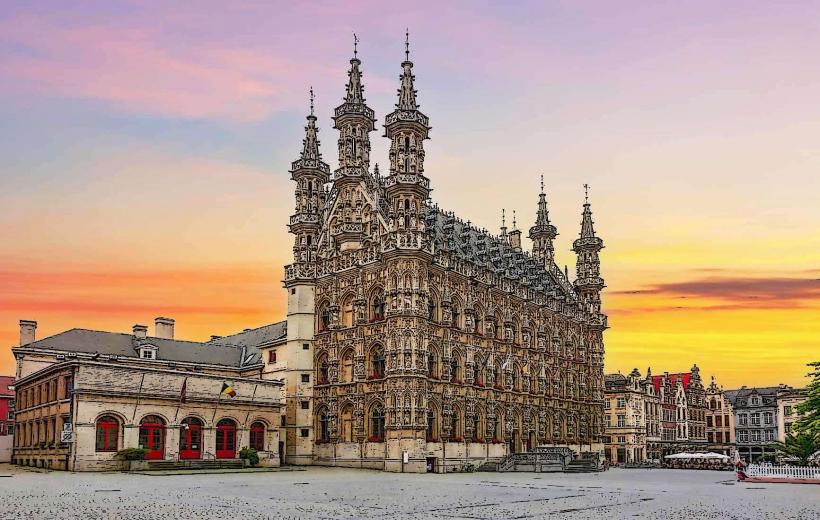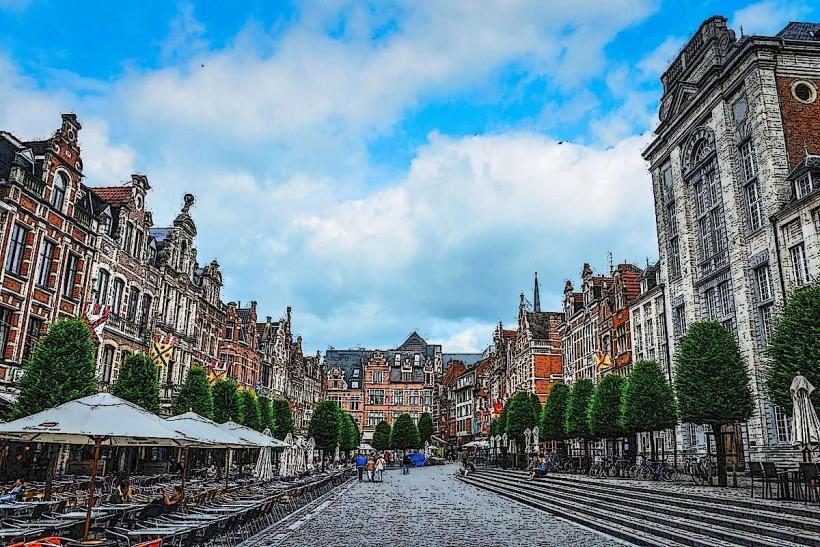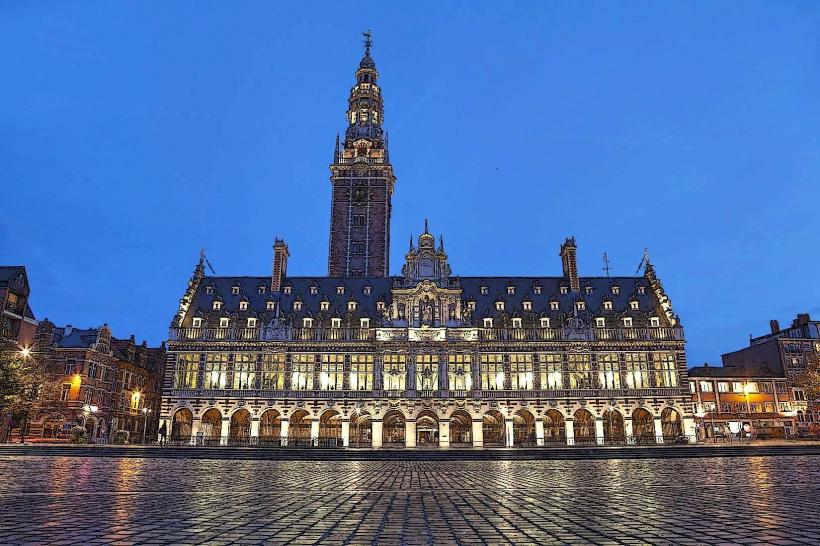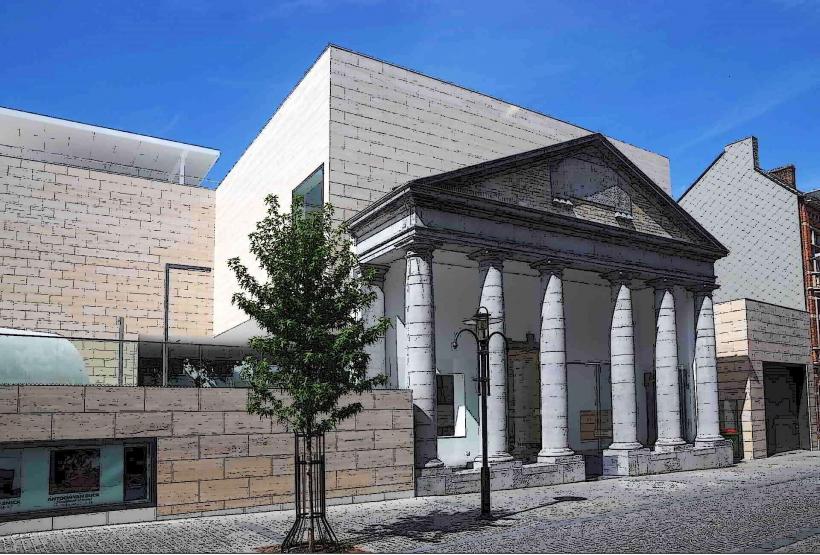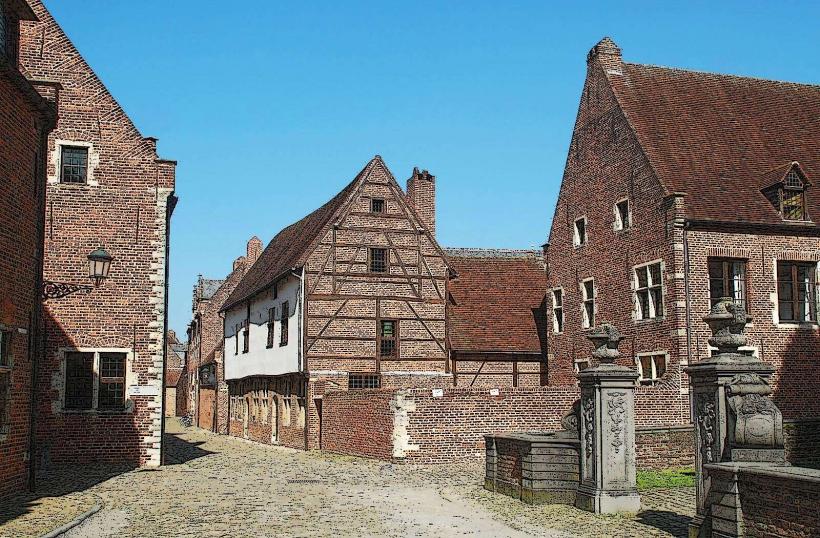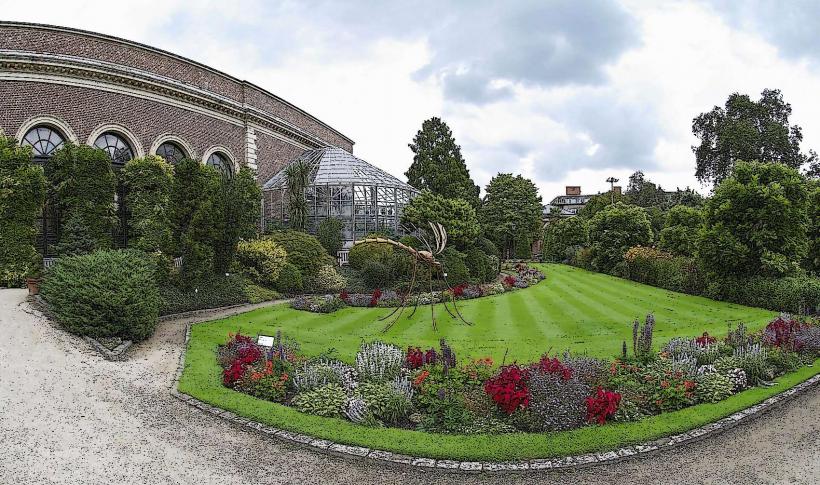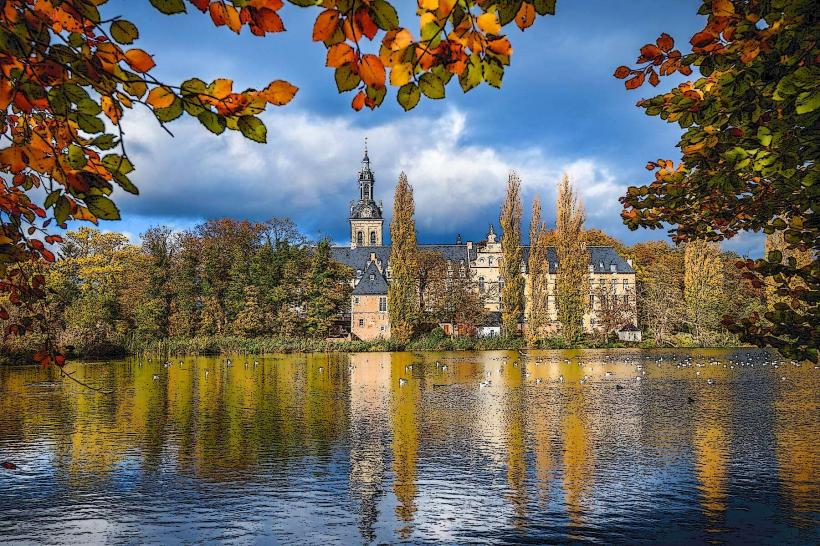Information
Landmark: St. Peter's Church (Sint-Pieterskerk)City: Leuven
Country: Belgium
Continent: Europe
St. Peter’s Church (Sint-Pieterskerk) is one of the most important and iconic churches in Leuven, Belgium. Located in the heart of the historic city center, this church is renowned for its impressive architecture, rich history, and artistic significance. It has played a central role in Leuven’s religious and cultural life for centuries.
History and Origins
- Foundation and Early Development: The origins of St. Peter’s Church date back to the 12th century, though the current structure is primarily a result of several renovations and expansions over the centuries. The church was originally built in the Romanesque style, but over time, it underwent significant changes, reflecting the architectural trends of each era.
- The church was initially dedicated to St. Peter, as the name suggests, and it served as the central place of worship for the growing town of Leuven.
- Gothic Transformation: The church underwent a major transformation during the 14th century, when it was rebuilt in the Gothic style, which was popular in Europe at the time. This period marked the start of the church's most significant expansion, turning it into a grand and awe-inspiring structure. It is known for its high vaulted ceilings, intricate stained-glass windows, and elaborate stone carvings.
- Completion and Additional Modifications: The church was not fully completed until the 17th century, with further alterations and additions made over the following centuries. The most significant of these changes were made to the church’s interior, including the installation of various altars, sculptures, and religious artwork.
Architectural Features
- Gothic Architecture: The church is an excellent example of Gothic architecture, with its soaring nave, pointed arches, ribbed vaults, and intricate stone carvings. The building’s exterior features elaborate details, including flying buttresses, spires, and numerous sculptures that depict biblical scenes and saints.
- Facade: The facade of St. Peter’s Church is striking, with its intricate stonework and large rose window. The window is a hallmark of Gothic design, featuring colorful stained-glass that tells stories from the Bible. The facade also includes sculptures of saints and religious figures, creating a dramatic and spiritual impression as visitors approach the church.
- Interior: Inside, the church features an expansive interior with high vaulted ceilings that create a sense of awe. The nave and aisles are lined with stained-glass windows, many of which date back to the 15th century and depict scenes from the life of Christ, the Virgin Mary, and various saints. These windows allow vibrant light to filter into the church, adding to the spiritual atmosphere.
- The interior also features a number of altars, statues, and chapels dedicated to different saints. The main altar, located at the eastern end of the church, is an impressive focal point, adorned with intricate carvings and sculptures.
- The pulpit is another notable feature, showcasing fine craftsmanship in wood and stone.
- The choir stalls, which were installed in the 16th century, feature detailed wood carvings depicting biblical stories and saints.
Artistic and Cultural Significance
- The Last Supper by Dirk Bouts: One of the church’s most famous treasures is the "Last Supper" painting by Dirk Bouts, a prominent Flemish artist of the 15th century. The painting is considered a masterpiece of the Flemish Primitives and is displayed in the church’s right transept.
- This artwork, known for its precise attention to detail, presents a biblical scene from the New Testament in which Jesus shares his last meal with his disciples. The piece is highly regarded for its realism and vivid portrayal of figures and emotions.
- The painting is part of a larger series of religious art pieces in the church that contribute to its cultural and artistic legacy.
- Stained Glass Windows: The church is also famous for its stained-glass windows, some of which are original, dating back to the 14th and 15th centuries. These windows are remarkable for their detailed depictions of biblical events, saints, and religious iconography, and they contribute to the church’s spiritual and artistic ambiance.
- Religious Relics: The church is home to a collection of relics and religious artifacts, some of which are housed in the various chapels around the church. These items serve as important elements of Catholic worship and are central to the church’s religious life.
The Tower of St. Peter’s Church
- The Belfry Tower: The tower of St. Peter’s Church is one of Leuven’s most iconic structures. Standing at over 100 meters tall, the tower is visible from various points around the city. It was originally designed in the Gothic style, but it was completed in the 16th century, giving it a distinctive architectural appearance that combines both Gothic and Renaissance influences.
- The tower is adorned with intricate details, including statues and carvings of biblical figures, saints, and angels.
- It houses a carillon, a set of bells that are played on special occasions, and it is often heard throughout the city, adding to the church’s presence in the urban landscape.
Role in the Community
- Place of Worship: Today, St. Peter’s Church continues to serve as a place of worship for both local residents and visitors. It is a popular destination for both Catholic services and tourists, and it regularly hosts mass and other religious ceremonies, such as weddings and baptisms.
- Cultural Center: The church also plays a key role in the cultural life of Leuven. It often hosts concerts, exhibitions, and other cultural events. The space’s remarkable acoustics and historic ambiance make it a perfect venue for classical music concerts, particularly those featuring choral performances or organ music.
- Tourism: As a major historical landmark, St. Peter’s Church is one of Leuven’s most visited attractions, drawing tourists from around the world who come to admire its architectural beauty, religious significance, and art collection.
Location and Accessibility
- Address: St. Peter’s Church is located at Ladeuzeplein, in the center of Leuven, Belgium.
- Public Transport: The church is easily accessible by bus or tram from all parts of the city, and the Leuven train station is a short distance away. The church is located in the city’s historic district, close to many other cultural landmarks.
- Opening Hours: St. Peter’s Church is generally open to the public during the day, with services taking place regularly. Visitors can explore the church at their leisure, and there are often guided tours available for those interested in learning more about the history, architecture, and artwork within the church.
Conclusion
St. Peter’s Church (Sint-Pieterskerk) is a key landmark in Leuven, known for its impressive Gothic architecture, historic significance, and cultural importance. It remains a central hub for both the religious life of the city and its cultural and artistic heritage. With its rich history, remarkable artworks like Dirk Bouts’ Last Supper, stunning stained-glass windows, and the iconic tower, the church is a must-visit for anyone exploring Leuven. Its beauty and spiritual presence make it an essential part of Leuven’s identity and history.

